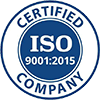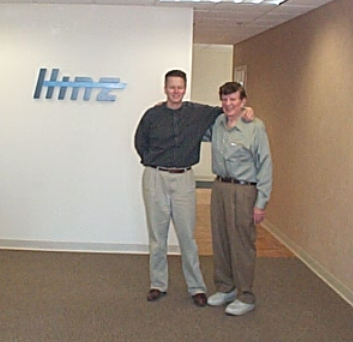Custom Machined Parts
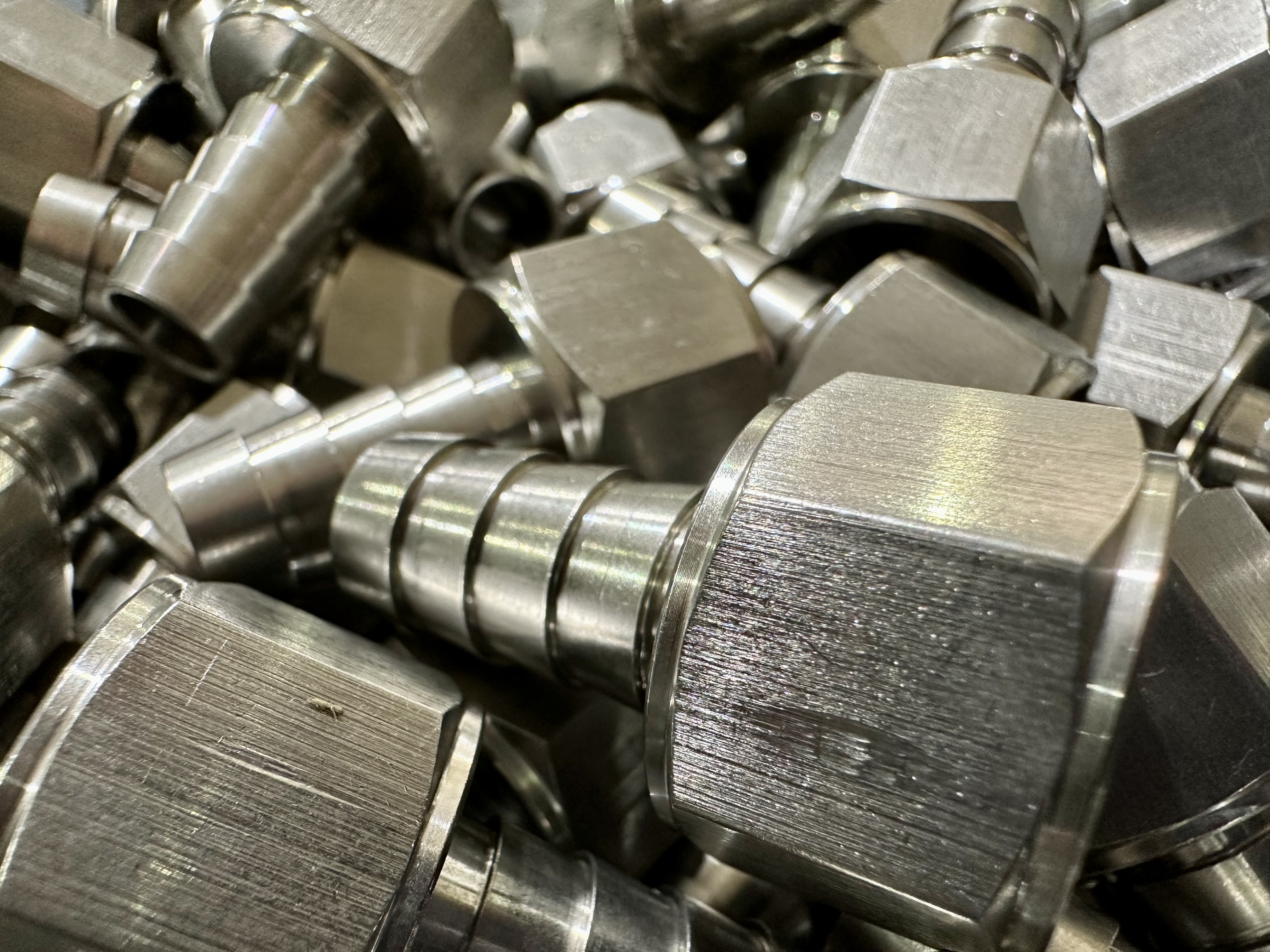
By seamlessly integrating advanced CNC machining technologies, The Hinz Company positions itself at the forefront precision engineering of custom machines parts. Their dedication to innovation is reflected in their state-of-the-art manufacturing processes, which enable the production of intricate custom machined parts with exceptional accuracy and efficiency. The company's responsive service is a cornerstone of their operations, ensuring that clients' unique specifications and requirements are not only met but exceeded. This commitment to tailored solutions has solidified enduring relationships with clients, as The Hinz Company becomes a trusted partner in the realization of superior products. Moreover, their competitive cost structure underscores their commitment to delivering value, making them an industry leader in the realm of custom machined parts.
Looking for High Volume Swiss CNC Parts?
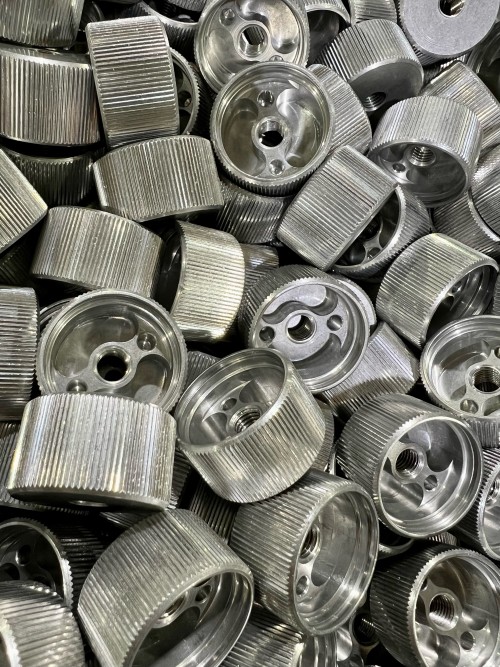
Hinz Company specializes in the production of high-volume Swiss CNC machined parts, leveraging advanced Swiss machining technology for precision manufacturing. Their expertise caters to diverse industries, including medical, electronics, aerospace, automotive, and watchmaking. Hinz Company excels in crafting intricate components like surgical instruments, electronic connectors, aerospace hardware, automotive parts, and precision watch components. With a focus on efficiency, their employment of simultaneous machining on CNC lathes ensures faster production times, meeting the demands of mass production. Hinz Company's commitment to versatility is evident in their ability to work with various materials, underscoring their flexibility in addressing specific manufacturing needs and consistently delivering high-precision CNC parts.
What is CNC Machining?
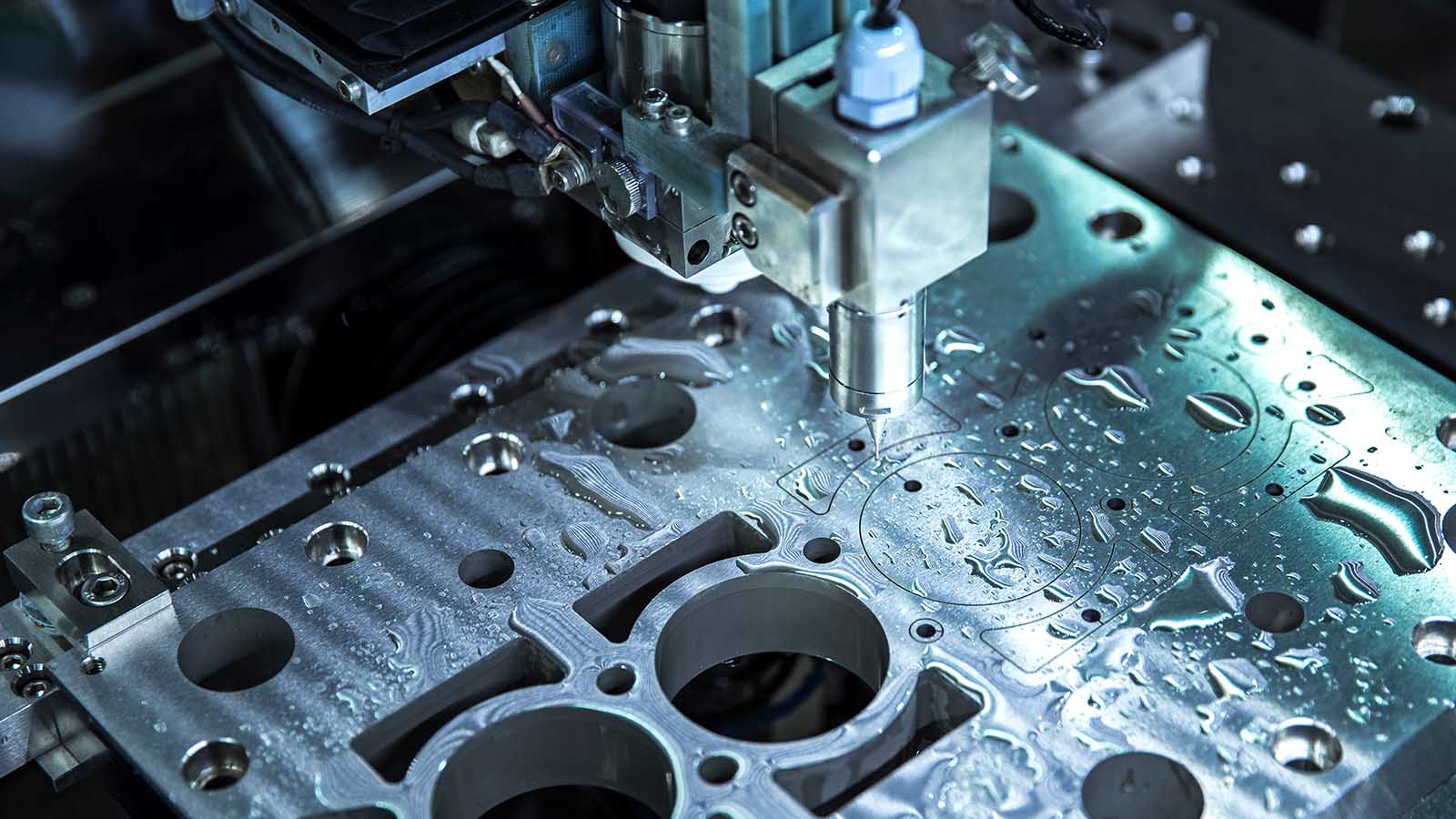
CNC machining, which stands for Computer Numerical Control machining, is a manufacturing process that uses computerized controls and precise machinery to remove material from a workpiece to create a custom-designed part or product. It's a highly versatile and accurate method for producing a wide range of components and parts for various industries, including aerospace, automotive, medical, and more.
Here's how CNC machining works:
-
Design: The process starts with the creation of a 3D computer-aided design (CAD) model of the part you want to produce.
-
Programming: A CNC programmer uses specialized software to convert the CAD model into a set of instructions (G-code) that the CNC machine can understand. These instructions specify toolpaths, cutting speeds, and other machining parameters.
-
Setup: The machinist or operator loads the workpiece (typically a block of metal, plastic, or another material) into the CNC machine and secures it in place using fixtures and clamps. They also load the necessary cutting tools into the machine.
-
Machining: The CNC machine follows the programmed instructions to precisely cut, drill, or shape the workpiece. It can perform a wide range of operations, including turning, milling, drilling, and electrical discharge machining (EDM), depending on the type of CNC machine.
-
Quality Control: Throughout the machining process, quality control measures are often taken to ensure the part meets the required specifications. This may involve taking measurements using precision instruments.
-
Finishing: After the rough machining is complete, additional processes like polishing, grinding, or surface treatments may be applied to achieve the desired surface finish and tolerances.
CNC machining offers several advantages, including:
-
Precision: CNC machines are highly accurate and can consistently produce parts with tight tolerances.
-
Repeatability: Once a program is set up, the same part can be replicated with high precision over and over again.
-
Complexity: CNC machines can create intricate and complex geometries that would be difficult or impossible to achieve manually.
-
Efficiency: CNC machining can be more efficient than traditional manual machining processes, especially for large production runs.
-
Flexibility: Changes to the design or specifications can be easily accommodated by modifying the CNC program.
Common types of CNC machines include CNC milling machines, CNC turning machines, CNC routers, CNC laser cutters, and CNC plasma cutters, among others. Each type of machine is specialized for specific tasks and materials, but they all rely on computer control for precision and accuracy.
What is CNC Multi-Axis Swiss Turning?
CNC Multi-Axis Swiss Turning, also known as Swiss-type CNC turning or simply Swiss turning, is a specialized machining process used for precision manufacturing of small, complex, and high-precision components, particularly in the aerospace, medical, automotive, and electronics industries. This machining technique is ideal for creating intricate parts with tight tolerances and fine surface finishes.
Here's a breakdown of the key components and characteristics of CNC Multi-Axis Swiss Turning:
-
Swiss-Type Lathe: The foundation of Swiss turning is a CNC lathe machine, often referred to as a Swiss-type lathe or Swiss screw machine. This type of lathe features a sliding headstock that holds the workpiece, a guide bushing to support and stabilize the material being machined, and a gang tooling setup. Unlike traditional lathes, Swiss lathes have a unique design that allows for precise and simultaneous machining of multiple features along the length of the workpiece.
-
Multi-Axis Capability: CNC Multi-Axis Swiss Turning machines are equipped with multiple axes of motion, typically including X, Y, Z, and often additional rotary axes (C and B axes). This multi-axis capability enables the simultaneous machining of various features, including turning, milling, drilling, and cross-drilling, on different parts of the workpiece without the need for multiple setups.
-
Guide Bushing: The guide bushing is a critical component in Swiss turning. It provides support and stability to the workpiece, especially when machining long and slender parts. The guide bushing is located close to the cutting tools, reducing vibration and ensuring excellent precision.
-
Sliding Headstock: The sliding headstock of a Swiss-type lathe holds the workpiece and allows it to move axially while rotating. This design eliminates the need for a traditional tailstock, making it suitable for machining long and slender parts.
-
Small Diameter Workpieces: Swiss turning is particularly well-suited for machining small-diameter materials, often in the range of 0.5 mm to 32 mm (0.02 inches to 1.25 inches) or even smaller. This precision machining process is commonly used for producing components such as medical implants, watch parts, aerospace fasteners, and electronic connectors.
-
High Precision: Swiss turning is renowned for its exceptional precision and repeatability. The combination of tight tolerances, multi-axis machining, and the use of guide bushings ensures that the finished components meet strict quality requirements.
-
Efficient Chip Management: Swiss lathes are designed with effective chip management systems to ensure efficient removal of metal chips produced during the machining process. This helps maintain the quality of the finished parts.
In summary, CNC Multi-Axis Swiss Turning is a specialized machining process that excels in producing small, complex, and high-precision components with tight tolerances. Its unique design and multi-axis capabilities make it a preferred choice for industries that demand precision and efficiency in the production of intricate parts.
What is CNC Multi-Axis Turning?
CNC Multi-Axis Turning, often simply referred to as multi-axis turning or CNC turning, is a machining process used to create cylindrical parts or components from a workpiece by removing material through rotational cutting. This process involves the use of a computer numerical control (CNC) machine, which is capable of precise and automated control of various axes of motion.
Here's a breakdown of the key elements and characteristics of CNC Multi-Axis Turning:
-
CNC Lathe Machine: At the heart of multi-axis turning is a CNC lathe machine. A CNC lathe is designed to hold and rotate the workpiece while various cutting tools are used to shape and machine it. The machine's movements are controlled by a computer program, allowing for precise control over tool positioning and cutting operations.
-
Multiple Axes of Motion: Multi-axis turning machines have several axes of motion. The primary axes include:
- X-Axis: Horizontal movement of the cutting tool along the workpiece's length.
- Z-Axis: Axial movement of the workpiece (in and out of the spindle).
- C-Axis: Rotational movement of the spindle and workpiece, which allows for indexing and contouring operations.
- Additional Axes: Some advanced CNC lathes may have more axes, such as Y-axis for off-center milling or B-axis for angular positioning of the tool.
-
Versatile Machining: Multi-axis turning is versatile and can perform various machining operations, including:
- Turning: Rotating the workpiece while the cutting tool removes material to create cylindrical shapes.
- Facing: Removing material from the end of the workpiece to create flat surfaces.
- Drilling: Creating holes or bores in the workpiece.
- Boring: Enlarging existing holes with precision.
- Threading: Cutting threads on the workpiece's exterior or interior.
-
Complex Geometry: Multi-axis turning is capable of creating parts with intricate and complex geometries. It can produce features like tapers, contours, grooves, and undercuts with high precision.
-
High Precision: CNC Multi-Axis Turning machines are known for their high precision and repeatability. They can achieve tight tolerances and excellent surface finishes, making them suitable for parts that require accuracy.
-
Automation and Efficiency: CNC control allows for automation of the machining process, which reduces manual labor and increases efficiency. Operators program the machine with specific tool paths, and the CNC system executes these instructions consistently.
-
Wide Range of Materials: Multi-axis turning can be used with various materials, including metals (e.g., steel, aluminum, brass), plastics, and even certain composites.
In summary, CNC Multi-Axis Turning is a versatile machining process that uses a CNC lathe with multiple axes of motion to produce cylindrical parts with precision and efficiency. It is widely used in manufacturing industries to create a wide range of components, from simple shafts to complex aerospace and medical parts.
What is CNC Vertical Machining?
CNC (Computer Numerical Control) Vertical Machining is a manufacturing process that involves using a CNC machine to create parts and components by removing material from a workpiece. The term "vertical machining" specifically refers to the orientation of the machining spindle within the machine, where the spindle is oriented vertically, perpendicular to the worktable. This setup allows for the cutting tool to move in a vertical direction, primarily along the Z-axis, while the workpiece remains stationary on the table. Here are some key aspects of CNC Vertical Machining:
-
CNC Machine: The CNC machine used for vertical machining is known as a vertical machining center (VMC). VMCs are equipped with a spindle that holds the cutting tool, a worktable for securing the workpiece, and a CNC control system that automates and controls the machining process.
-
Vertical Spindle: The spindle in a VMC is oriented vertically, meaning it moves up and down along the Z-axis. This configuration allows for the precise machining of features on the top surface of the workpiece.
-
Three Axes of Motion: CNC Vertical Machining typically involves three primary axes of motion:
- X-Axis: Horizontal movement of the cutting tool along the length of the worktable.
- Y-Axis: Horizontal movement perpendicular to the X-axis, allowing for lateral tool movement.
- Z-Axis: Vertical movement of the spindle and cutting tool, which controls the depth of the cuts into the workpiece.
-
Precision Machining: VMCs are known for their ability to achieve high levels of precision and accuracy. They can produce parts with tight tolerances and excellent surface finishes.
-
Versatility: CNC Vertical Machining can be used to perform a wide range of machining operations, including milling, drilling, tapping, boring, and contouring. This versatility makes it suitable for manufacturing various components, from simple parts to complex, multi-feature components.
-
Automation: CNC Vertical Machining centers are highly automated, allowing for the efficient and consistent production of parts. The machining process is programmed using computer software, and the CNC control system guides the cutting tool's movement based on the programmed instructions.
-
Suitable Materials: CNC Vertical Machining can be applied to a variety of materials, including metals (such as steel, aluminum, and titanium), plastics, and composites.
-
Tool Changes: VMCs often have automatic tool changers that can switch between different cutting tools during the machining process, allowing for a wide range of operations to be performed in a single setup.
CNC Vertical Machining is commonly used in industries such as aerospace, automotive, medical device manufacturing, and general machining, where precision and efficiency are essential. It is ideal for creating complex parts and components with a high degree of accuracy, making it a cornerstone of modern manufacturing processes.
